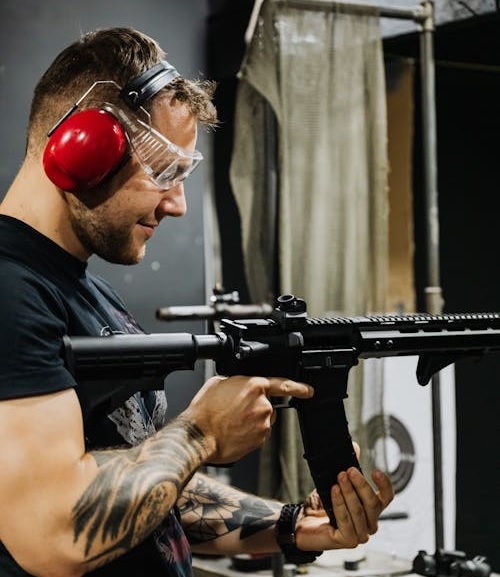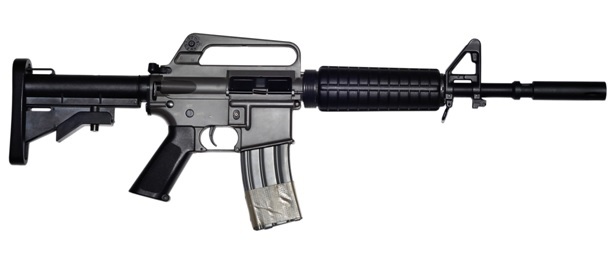AR15 and M16 Parts: Everything You Need to Know About Barrels
Nov 9th 2023
The barrel you select for your AR15 or M16 build is one of the most important considerations you can make.
The barrel you choose, in terms of material, length, rate of twist, and finish, will directly impact the performance of the rifle with respect to accuracy and muzzle energy, as well as handling, ease of maintenance, and more.
Let’s take a closer look.
About AR-15 and M16 Parts: Barrel Materials
The most basic aspect of AR-15 and M16 parts, with respect to the barrel, is what the barrel’s made from.
Of course, they are all made from steel, but steel grade, chemistry, and heat treatment impact barrel performance and life.
You will often see barrels referred to as stainless steel or otherwise, but steel chemistry is much more complex with that.
Let’s start with stainless steel. First, there is no such thing as a truly “stainless” steel. Some grades are simply more resistant to corrosion than others are.
The most common grades of stainless steel barrels (also known as SS barrels) are made with 400 series stainless steel.
One common grade is 410 stainless steel, also known as martensitic stainless steel. It is a relatively soft stainless steel and as a result requires a good heat treatment. It is notorious for poor performance in extremely cold temperatures.
Another is 416 stainless steel. This grade is softer and exhibits lower resistant to corrosion than some other grades of stainless steel. It might stand up to humidity but will not perform well in marine environments.
Another more expensive grade in the 400 series is 416R, which will perform better than 410 in extremely cold conditions.
There is another common grade of stainless, known as 17-4 PH, which is also known as 630 stainless. It is not as common as it once was, but can be used to create AR-15 barrels that are extremely heat resistant.
With all of this said, it is still important to stress that even a stainless steel barrel will rust if not properly cleaned and cared for.
On the flipside we have everything else, which can be loosely (and somewhat inaccurately) referred to as “high-carbon steel barrels.”
A common carbon steel alloy is 4140, which has .4% carbon. Another common alloy is 4150, which has .5% carbon, and is slightly harder and stronger.
One of the most common, and strongest grades of steel used to produce AR15 barrels is called 4150 CMV, which stands for chromoly vanadium. This grade has .5% carbon for hardness and strength, molybdenum and vanadium added for additional strength, and chrome for a slight resistance to corrosion.
The latter offers an excellent balance in terms of strength, wear-resistance, and overall performance.
Barrel Finishes

There is almost as much variety in AR15 and M16 barrel finishes as there is in barrel steel metallurgy. The following are some of the more common finishes.
One of the most common ways to treat AR-15 and M16 parts (not just the barrel) is through a process known as parkerizing, which leaves a phosphate finish.
A parkerized finish is permanent, durable, and has a slight tooth, resulting in a matte finish. This means that, among other things, parkerized finishes are non-reflective and hold liquid lubricant well. They are also fairly resistant to corrosion and wear, and relatively affordable, as finishes go.
A common alternative to parkerized finish is a black nitride finish, commonly referred to simply as nitride. Nitriding hardly affects the shape and volume of the barrel and deposits an extremely hard surface layer that is both scratch and corrosion-resistant, and very low maintenance. Nitrided barrels (which are nitrided inside and out) also exhibit excellent permanent dry lubricity, making it easier to keep them clean.
Another type of finish you should be aware of is chrome lining, although this refers to the treatment on the inside of the bore only. Chrome lined barrels are fairly corrosion and wear resistant, and relatively easy to keep free of fouling.
Barrel Length
Barrel length is another thing to keep in mind when looking for AR-15 or M16 parts. Arguably the three most common barrel lengths are 20”, 18” and 16”.
A 20” barrel is probably the most common for most AR-15 rifles. This length produces the highest muzzle velocity and ballistic performance, the flattest trajectory, and the greatest accuracy. They are also heavier, helping to absorb recoil better. They’re best for long-range shooting and hunting. They don’t handle as well as close ranges, though.
One step back is 18” (not as common) but another common length is 16”, which produces a carbine-length platform. An AR or M16 with a 16” barrel will not produce the same muzzle velocities as one with a 20” barrel, but they are more maneuverable and lighter, making them superior at close ranges.
Rifling Type
There are two main types of rifling, being cut rifling and button rifling. The oldest type is cut rifling, produced by physically running a sharp hook through the bore of the barrel several times to cut out the rifling’s grooves.
Cut rifling is an expensive and slow process that cannot be easily scaled, but it produces extremely consistent results and tight tolerances, making it preferable for producing high-accuracy, precision barrels.
On the flipside, button-rifled barrels are rifled by forcing a tungsten carbide button through the barrel, which rapidly cuts out the grooves for the rifling. This is a cost-effective process and can be scaled for mass manufacture, but it inflicts a lot of stress on the barrel. Some button-rifled barrels are considered cheap, but it is also possible to produce a highly accurate, button-rifled barrel.
Rifling Twist Rate
The last thing to consider here in terms of AR-15 and M16 barrels is rifling twist rate.
Twist rate refers to how far along the barrel a projectile has to travel in order to complete one complete revolution around an axis that runs through its center.
The three most common rates of twist for AR-15 and M16 barrels are 1:7, 1:8, and 1:9.
A twist rate of 1:7 is what the military uses and is better with shorter barrels and heavier bullets. The best middle-ground option is 1:8, and will work best with barrels between 14” and 18”.
If you have a 20” barrel, 1:9 is a great option, and it will work best with lighter bullets; anything less than 62 grains will do well with 1:9, like 55-grain 5.56 ammo.

Looking for AR-15 and M16 Parts? Start Here
Ready to get started with your build? Whether you’re looking for AR-15 or M16 parts, we have them, including barrels - and now you know the ins and outs of barrel specs.
Take a look through our collection of parts and let us know if we can help you - contact us at 610-250-3960 if you have any questions.

